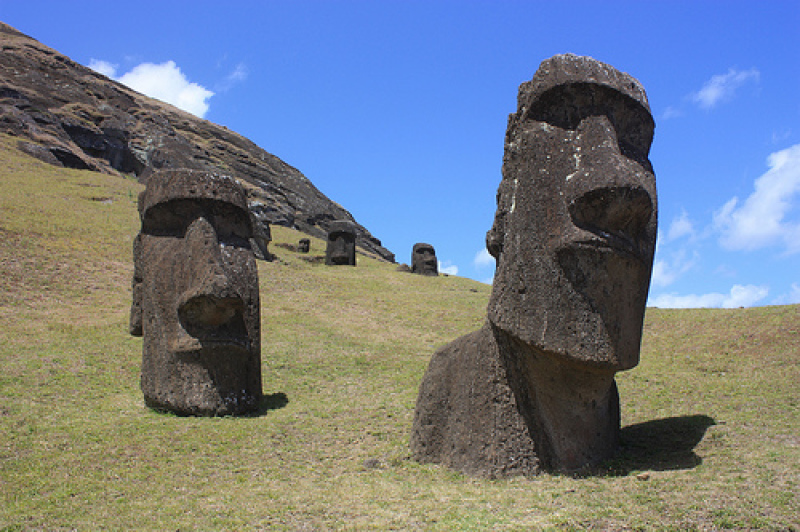
A new study on the Rapa Nui, the native population of Easter Island, suggests that the demise of the inhabitants was brought on by severe environmental conditions, Live Science reported.
This new theory contradicts the notions that the islanders died after abusing the natural resources and that the population was wiped out due to foreign diseases and slavery practices introduced by Europeans.
According to Dr. Thegn Ladefoged, an anthropology professor at New Zealand's Auckland University and co-author of the study, the Rapa Nui's society has been declining even before Europeans arrived on the island in 1722.
Ladefoged and his colleagues attributed the island's irregular environmental conditions as the main cause behind the fall of the Rapa Nui.
The researchers were able to come up with their findings by dating rocks and tools made from obsidians, a type of glass formed by volcanic lava.
When exposed to air, obsidian objects absorb water. The researchers were then able to determine when the objects were made and used by humans after analyzing their water content.
By studying over 400 obsidian artifacts from three different sites of the island, researchers were able to learn how long the Rapa Nui used the tools.
They discovered that based on the irregular tool-usage of humans in the three sites, the Rapa Nui had a hard time adapting to the island's environmental conditions, according to The Huffington Post. The findings also suggest that the inhabitants did not overuse the tools or abuse their natural resources.
In addition, the researchers pointed out that the Rapa Nui has been struggling to survive long before the Europeans arrived on their island.
"Our research does not support the suggestion that societal collapse occurred prior to European contact due to physical erosion and productivity decline, but it does indicate that use of less optimal environmental regions changed prior to European contact," Ladefoged told The Huffington Post.
"While we do not have direct population data, it is clear that people were reacting to regional environmental variation on the island before they were devastated by the introduction of European diseases and other historic processes," he added.



















